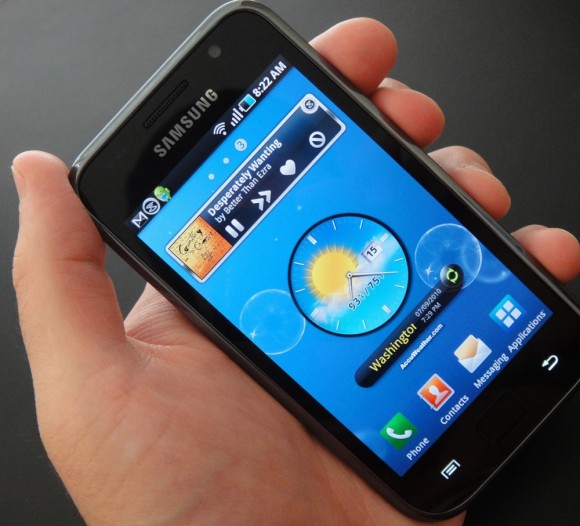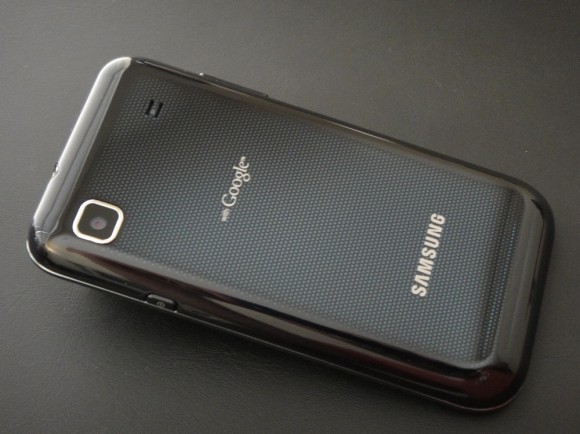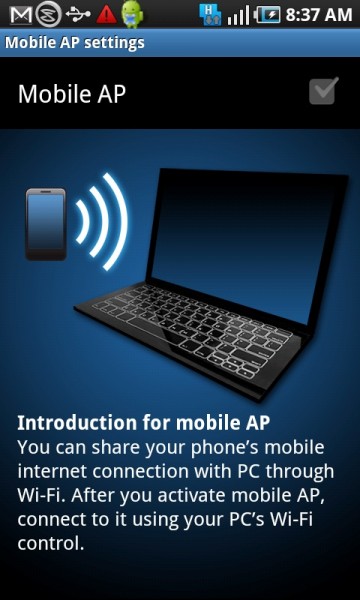
Samsung’s making a splash with their new, high-end line of Android “Galaxy S” handsets. And while they’ve already launched overseas, the US variants with custom enclosures and functionality, start rolling out today:
As part of the launch festivities, I was provided a stock Galaxy S to evaluate. Media outreach and spec sheet highlights have led with Samsung’s 4″ 800 x 480 Super AMOLED screen. And while I initially found it oversaturated, even garish (combined with Samsung’s Touchwiz skinning), I’ve landed somewhere else entirely. In fact, I’ve concluded that the Galaxy S utilizes the most pleasing mobile display I’ve encountered — striking an excellent balance of resolution, size, and vibrancy. The Galaxy S obviously isn’t as high res as Apple’s iPhone 4 pixel-dense “retina display” … but with uncorrected sub-20/20 vision, it’s not like I’ve been bothered by aliasing at 18″. So, ultimately, I find myself in the same camp as Harry McCracken of Technologizer:
if all other phone features were equal, I’d take more square inches over more pixels
A common Galaxy S knock has been a plasticy appearance and/or feel. And while the enclosure is indeed plastic, it contributes (positively) to a lightweight feeling device, despite sporting that 4″ display. (And how quickly folks have forgotten iPhone 3GS and 3G’s slippery plastic backside?) There’s no debating that the Samsung’s handset doesn’t pack the same level of materials or symmetry found on the iPhone 4 but, in my week of usage, the Galaxy S has been both comfortable and functional.

Regarding the Galaxy S’s photographic capabilities, I can tell you the handset captures 5 megapixel stills and 720p video. I haven’t shot enough sample content to pass judgement, other than saying quality’s in about the same ballpark as most of the competition. Two other camera notes… The Galaxy S doesn’t incorporate a LED, or other, flash. Which isn’t a problem for me, as a flash-free photographer, but it’s something you may want to consider. Also, my particular unit houses a front-facing camera. But, sadly, I’m unaware of any Market apps which support the feature (yet) and believe only the Sprint model in the US will contain similar.
Like other Android smartphone manufacturers, Samsung aims to enhance the stock ‘droid experience by providing their own skin, other UI customizations, and apps. The latest incarnation of Touchwiz (3.0) is an improvement over its predecessors and it’s definitely grown on me during my period of testing. Yet, there’s still much I prefer from HTC’s SenseUI – specifically in regards to home screen and icon presentation. However, I do quite like Samsung’s dialer and the non-standard (for Android), but more consistant, horizontal app tray cycling.
The Galaxy S also comes preloaded with some Samsung social-esque apps that I’ve mostly ignored, but the wireless hotspot functionality and Swype software certainly got my attention. It’s a safe assumption that the US Galaxy S handsets won’t ship with the infinitely useful wireless access point app (without associated tethering charges), but we know Swype’s being bundled. And it makes for an amazing keyboard replacement app. In addition to tapping out characters, Swype lets you virtually connect the alphabet dots for text entry – and the accuracy is uncanny. Not perfect, but damn good. Check out the demo video at jkOnTheRun to see Swype in action.

Of course, phones are still used for voice communication and I did make a few calls. Audio quality has been fine on both ends and earpiece volume seems louder than my 3GS. While I didn’t get around to testing the speakerphone, the external speaker found on the rear/bottom actually did a decent job streaming Slacker without a headset.
Overall, I’ve quite enjoyed my Samsung Galaxy S review hardware and any of the US models should make for a fine smartphone. But there have been some instances of UI lag which you should be aware of. And I’m not alone in this observation, as the experience has been corroborated by my pals at Slashgear. Given the higher-end hardware specs, including 1 Ghz processor, I imagine it’ll merely be a matter of pushing some software optimizations out – perhaps accompanying the promised Android 2.2 Froyo update later this year.
Dave, would the Qik App work on Samsung’s front camera? It does very well on my Evo, but I don’t know if the app is Evo-only.
Neither Fring nor Qik yet work with the front-facing Galaxy S camera as far as I can tell. The general phone dialer does present a video button, but suspect it’s not something that’ll work here in the States with our carriers. But I do assume Qik and/or Fring will eventually be updated for the Galaxy S (and EPIC 4G).
Don’t squeeze it too hard… You’ve been warned…
Upgraded from a T-Mobile myTouch Slide. By comparion, signal reception was awful. People on T-Mobile with other phones regularly beat me by at least one, often two bars.
GPS acquisition time was similarily inferior to the Slide, taking over 10 minutes on a 15 minute drive.
I bought the phone for the beautiful screen and impressive camera, but reception and navigation are very important to me. I ended up returning the phone within the remorse period and going back to my Slide.
aku mau jadi orang sukses untuk selama2nya…..